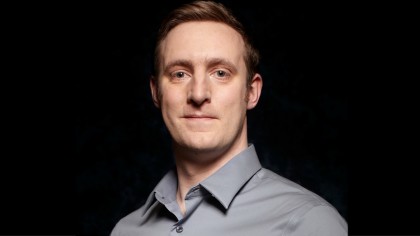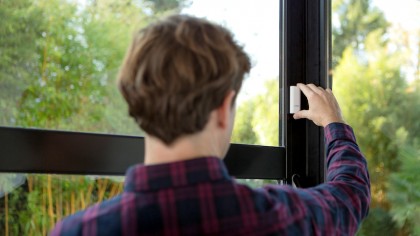Cloud on clouds: How weather data is a test-bed for new tech
It's raining big data, IoT and machine learning
Predicting the weather
If Netatmo is trying to provide micro-weather data on what's currently happening, the MetOffice is most concerned with forecasting – and that means macro-data. "The role of the MetOffice is to complement data affecting people's everyday life, enlarging its possibilities to dimensions where hyper-local information is not enough, such as weather predictions," says Ewen.
However, the Met Office is also getting involved in crowdsourcing data from the same 'amateur observing community' that Netatmo is encouraging, most recently in its WOW – the 'Weather Observation Website' campaign – which is trying to get families and children to input data on what the weather is like where they live. "These snippets of information help to build up a real-time and realistic picture of the current landscape, but also help us to build a more precise forecasting for the coming days," says Ewen.
Dynamic datasets
With a dataset that changes every 15 minutes or less, weather is big numbers, and with computational capacity rising exponentially as data volumes and data variety increases, too. "Traditionally, the weather industry used to take data to the problems," says Ewen. "We're looking at technology that brings small data and algorithms to all the big data."

Cloud on clouds
Predicting the weather has always been a lot about cloud, but it's now also about the cloud. Once a cable TV company, The Weather Channel – recently bought by IBM to power its forthcoming Watson AI apps – gradually built up its infrastructure to provide local weather for 2.4 billion locations worldwide, using 13 data centres and generating four terabytes of data every hour.
Ironically, given its purchase by IBM, it has recently redesigned its entire big data platform on Amazon Web Services (AWS). "The Weather Channel is a case study in the removal of constraints of working in the cloud," says Dr. Matt Wood, Product Strategy at AWS. "It was able to take data from its instruments to predict the weather for three million points, but since it's moved to AWS it's increased the resolution to three billion."
By using the cloud The Weather Channel now processes a prediction in milliseconds, and every 15 minutes rather than once per hour. "It runs 20,000 cores on AWS and has several 100 TBs of shared memory across the cluster," says Wood, and it needs to. If you ask Siri or Google what the weather is, she asks The Weather Channel. "That's about 700 million people who depend on it," says Wood.

Deep machine learning
There are two different approaches – high resolution models, and deep machine learning. The first relies on new, more detailed satellite mapping to capture local conditions more accurately.
Are you a pro? Subscribe to our newsletter
Sign up to the TechRadar Pro newsletter to get all the top news, opinion, features and guidance your business needs to succeed!
The second involves "cognitive technologies such as deep machine learning to understand which weather model was more accurate when, where and under what weather situation, using historical weather forecasts and historical weather data," says Hamann, who is working on exactly this with the Department of Energy and the University of Michigan. "That learning is then applied for future forecasts … both tech approaches often coexist."
The second approach involves a lot of supercomputer power being thrown at weather data in the name of hyper-local personalisation. "Our observations are combined with unmatched supercomputing power, meaning we can deliver forecasts with more accuracy and personalisation," says Ewen of the Met Office's supercomputer. "This new supercomputer will deliver some £30 billion (around $45 billion, or AU$64 billion) worth of benefits in a five year period."
When it comes to bleeding edge new tech, it never rains but pours in the world of weather forecasting.
- 1
- 2
Current page: Weather prediction and deep machine learning
Prev Page Introduction and crowdsourcing weather dataJamie is a freelance tech, travel and space journalist based in the UK. He’s been writing regularly for Techradar since it was launched in 2008 and also writes regularly for Forbes, The Telegraph, the South China Morning Post, Sky & Telescope and the Sky At Night magazine as well as other Future titles T3, Digital Camera World, All About Space and Space.com. He also edits two of his own websites, TravGear.com and WhenIsTheNextEclipse.com that reflect his obsession with travel gear and solar eclipse travel. He is the author of A Stargazing Program For Beginners (Springer, 2015),
